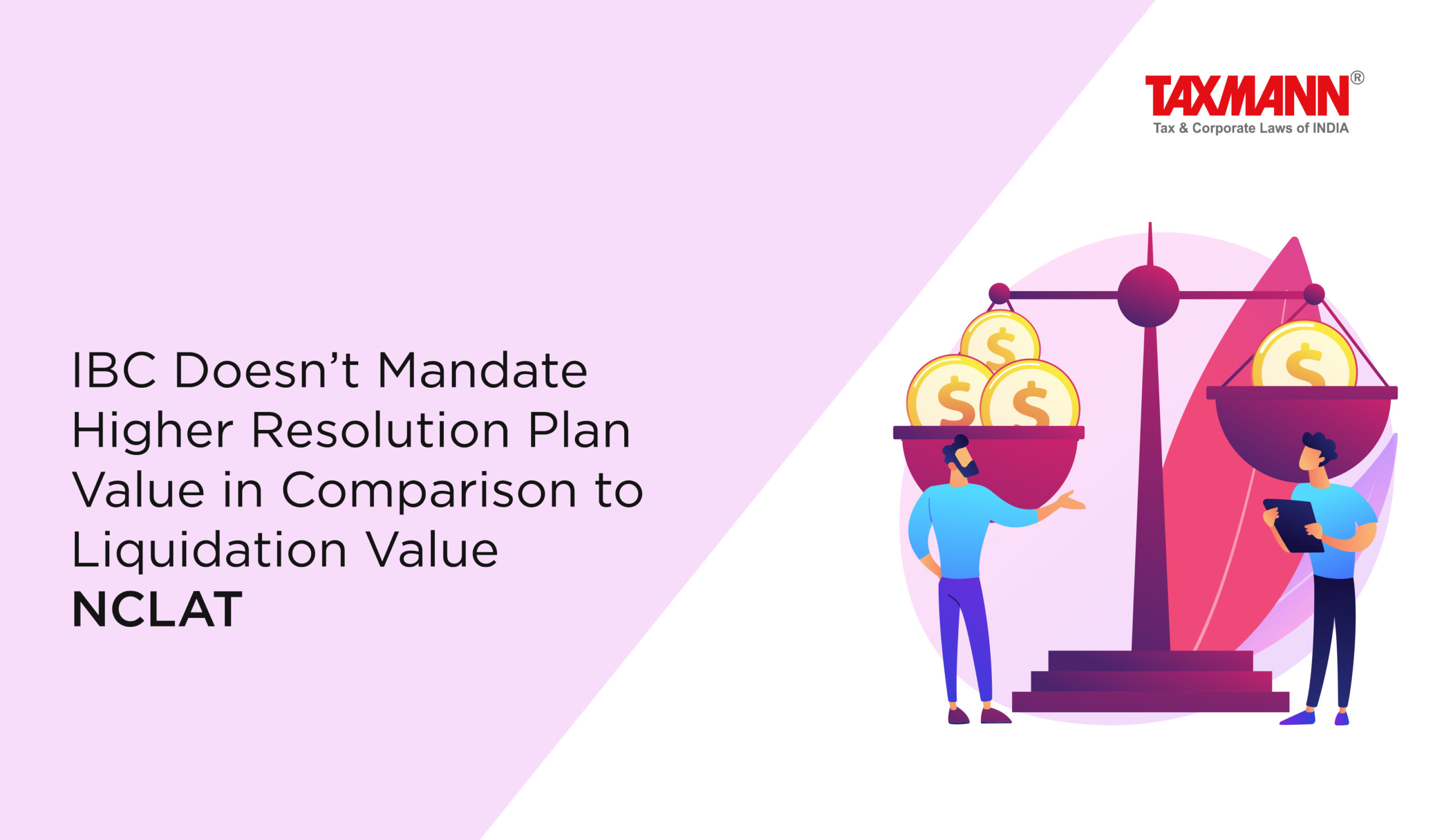IBC Doesn’t Mandate Higher Resolution Plan Value in Comparison to Liquidation Value | NCLAT
- Blog|News|Insolvency and Bankruptcy Code|
- 2 Min Read
- By Taxmann
- |
- Last Updated on 20 September, 2023

Case Details: Manesh Agarwal v. Pramod Kumar Sharma, Resolution Professional of B.B. Foods (P.) Ltd. - [2023] 153 taxmann.com 752 (NCLAT-New Delhi)
Judiciary and Counsel Details
-
- Justice Ashok Bhushan, Chairperson & Naresh Salecha, Technical Member
- Krishnendu Datta, Sr. Advocate, Kumar Anurag Singh, Shwetank Singh & Ms Neha Agarwal, Advs. for the Appellant.
- Abhijeet Sinha, Saif Ali, Aditya Shukla, Arvind Nayar, Sr. Advocate, Akshay Joshi, Abhishek Kumar, Shubham Pandey & Nilotpal Shaym for the Respondent.
Facts of the Case
In the instant case, the CIRP was initiated against the corporate debtor by the Adjudicating Authority (NCLT) and the Resolution Professional (RP) was appointed. The appellant (i.e. suspended director of the corporate debtor) submitted a settlement offer u/s 12A of the IBC before the CoC of the corporate debtor.
NCLAT Held
However, the resolution plan submitted by the resolution applicant/R2 was approved by the CoC and the same was submitted by the RP before the NCLT. The appellant filed an application before the NCLT challenging the said resolution plan. The NCLT passed two separate orders i.e. impugned orders approving the resolution plan of R2 and rejecting the application filed by the appellant.
Aggrieved by the said orders, the appellant filed an instant appeal submitting that R2 was ineligible u/s 29A of the IBC since its director/R3 was the managing director of companies allowed to be liquidated under UK laws, which adversely affected the eligibility of R2.
Further, the appellant raised an issue on non-consideration of the settlement offer and also that the resolution offer of the R2 was lower than the liquidation value of the corporate debtor as well as the settlement offer amount.
It was noted that R3 was serving as director in other UK-based company and he would not have been allowed to continue in the said company, had he remained ineligible as per UK Laws. Thus, there was no error in the impugned order and the instant appeal was to be dismissed.
List of Cases Reviewed
-
- Maharashtra Seamless Ltd. v. Padmanabhan Venkatesh [2020] 113 taxmann.com 421/158 SCL 567 (para 25) followed.
- Manesh Agarwal v. Pramod Kumar Sharma, Resolution Professional (for BB Foods (P.) Ltd.) [2023] 153 taxmann.com 751 (NCLT – All.) (para 27) affirmed. [See Annnex].
List of Cases Referred to
-
- Maharashatra Seamless Ltd. v. Padmanabhan Venkatesh [2020] 113 taxmann.com 421/158 SCL 567 (SC) (para 17).
Disclaimer: The content/information published on the website is only for general information of the user and shall not be construed as legal advice. While the Taxmann has exercised reasonable efforts to ensure the veracity of information/content published, Taxmann shall be under no liability in any manner whatsoever for incorrect information, if any.

Taxmann Publications has a dedicated in-house Research & Editorial Team. This team consists of a team of Chartered Accountants, Company Secretaries, and Lawyers. This team works under the guidance and supervision of editor-in-chief Mr Rakesh Bhargava.
The Research and Editorial Team is responsible for developing reliable and accurate content for the readers. The team follows the six-sigma approach to achieve the benchmark of zero error in its publications and research platforms. The team ensures that the following publication guidelines are thoroughly followed while developing the content:
- The statutory material is obtained only from the authorized and reliable sources
- All the latest developments in the judicial and legislative fields are covered
- Prepare the analytical write-ups on current, controversial, and important issues to help the readers to understand the concept and its implications
- Every content published by Taxmann is complete, accurate and lucid
- All evidence-based statements are supported with proper reference to Section, Circular No., Notification No. or citations
- The golden rules of grammar, style and consistency are thoroughly followed
- Font and size that’s easy to read and remain consistent across all imprint and digital publications are applied





